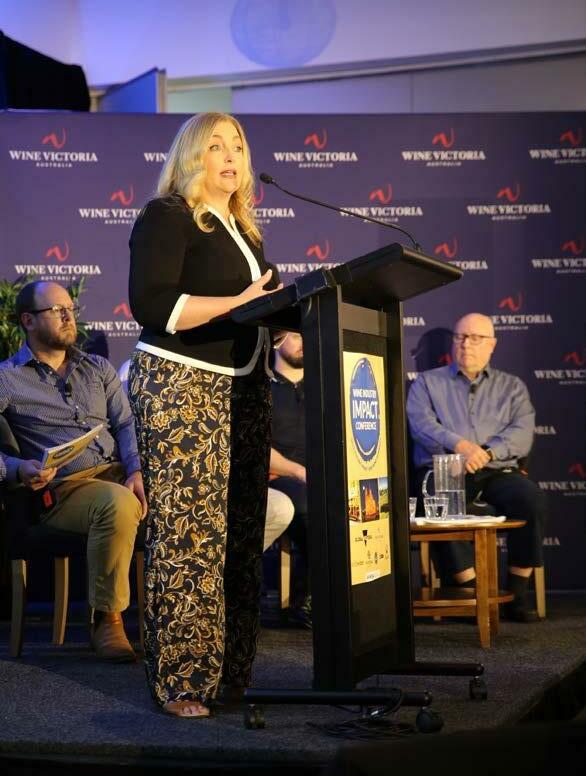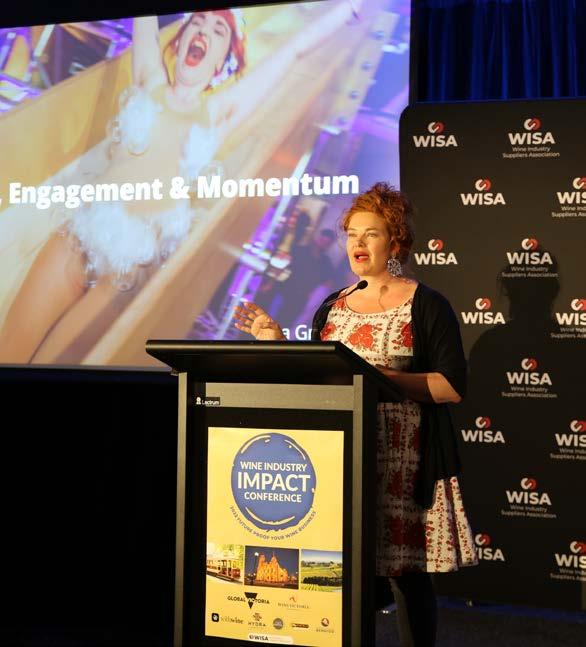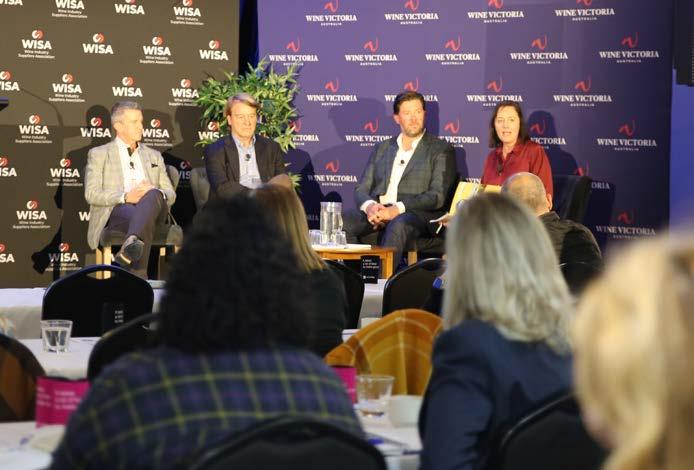
3 minute read
Speakers share business know-how at 2022 IMPACT Conference
WISA Executive Officer Shirley Fraser

Last month, journalist Harrison Davies attended the 2022 Wine Industry Impact Conference held in the regional Victorian city of Bendigo. Over the event’s two days, around 140 delegates heard from a range of speakers focusing on the way forward for the wine sector amidst ongoing challenges.
The Wine Industry Impact Conference returned in 2022, with this year’s event taking place in Bendigo in central Victoria and providing an opportunity for wine business operators to come together and discuss ways to ‘future proof their businesses’ as well as to take a broader look at the industry at large. The conference boiled largely down to two major topics: sales at home and sales abroad.
Around 140 delegates descended on Bendigo to attend presentations and workshops featuring more than 30 speakers from around Australia and abroad.
The challenges resulting from the closure of the China market, supply chain disruptions and the changing demographics of the wine consumer market loomed large over the conference. The first day of the conference featured a baker’s dozen of speakers and was hosted by MC and wine writer Jeremy Oliver. Michael Whitehead, head of agribusiness at ANZ, opened the conference with an outlook on the state of Australian wine exports. While the outlook was grim from the onset, he provided a positive outlook in his closing remarks. “Chardonnay and Prosecco are leading the industry in value growth, both domestically and in exports,” he said. New Zealand winemaker and owner of Waiheke Island label Destiny Bay, Sean Spratt, gave a presentation that explored how wine businesses could “exploit their unfair advantages.” He explained how his winery was inspired by pioneer aviator Amelia Earhart to find a way to make its wines unique and find a corner of the market for them to succeed.
“If you can’t be the first of your kind, find something that you can be the first in,” he said.

Destiny Bay owner Sean Spratt, Brown Family Wine Group CEO Dean Carrol, Fowles Wine CEO Matt Fowles, and Robin Shaw Tracie Young of Silver Spoon Wines

Several speakers continued on with the value of the US market, including Matt Fowles, vigneron at Fowles Wines. He emphasised the importance of introducing one’s label to the US market in person. Incoming Australian Grape & Wine CEO Lee McLean gave his first presentation since the announcement of his new role.
Additonally, Enolytics CEO Cathy Huyghe explored narratives and what should not be considered when looking to sell an Australian wine in the US market.

“There isn’t a narrative about Australian wine because no two Australian wines are the same and this is also true for the American wine drinker,” she said. Several speakers also looked at embracing younger consumers and explored ways to entice millennials and Gen Z towards wine.
New trends
Angas Hughson, founder and publisher of Winepilot, explored how new packaging formats, as well as healthier options like no and low alcohol wines, were influencing the market and how these trends were built upon a new fascination and focus on health.
Meanwhile, Polly Hammond, founder and CEO of the 5forests marketing agency, helped attendees understand their misunderstandings of generational demographics: targeted “generational marketing is bulls**t,” she exclaimed. The next day had delegates plunged deep into workshops exploring the three key topics of sales, marketing and technology and how those themes become interconnected.
Finding ways to create connections with consumers through experiences and forging relationships with export distributors and on-premise suppliers were workshop topics of particular interest for delegates. The conference closed with a speech from keynote speaker Peta Granger, the former director of Lush Cosmetics Australia.
Directing her presentation to wine industry operators, Granger shared her wealth of experience in guiding a company through shifts in the market and in responding to wider societal changes. “Everyone in the company should have a hand in how the company is run,” she said. “At Lush, all our marketing team would have a few days on the floor of one of our stores when they started. “We would also ask our casual staff about things like uniform and how the brand should present itself at Christmas, and these strategies led to massive successes for the company.”










